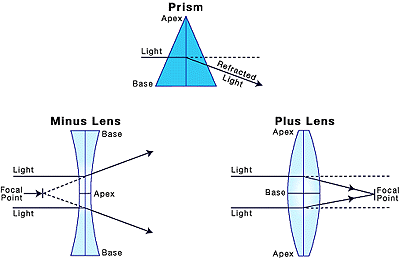Lenses
Understanding Snellís Law can
help us understand perhaps the most basic application of it:
lenses. Did you ever use a magnifying glass to fry ants? If
you have, you know that you canít just hold the magnifying
glass above ground and expect it to start a fire. You have
to find the perfect distance between the lens and the ground
so that all the light is focused on one spot. This distance
is called the focal length, and that spot is called the
focal length.

From: HowStuffWorks, Inc
This effect happens with
convex lenses. Convex lenses bulge out around one or
both sides, so that light passing through them will
always bend towards the center of the lens. Since the
outside is curved away from the source of light, the
angle of incidence of each ray of light is greater the
further from the center is strikes, meaning the
refracted angle is also greater. This ensures that all
light striking a convex lens from the same side will
eventually condense into one point. This feature makes
convex lenses useful in a number of products, such as
magnifying glasses and corrective lenses for
farsightedness.
Concave lenses do just the
opposite. They instead disperse light away from a single
source. This can be used to make projectors, binoculars,
flashlights, and other products that rely on this
effect.